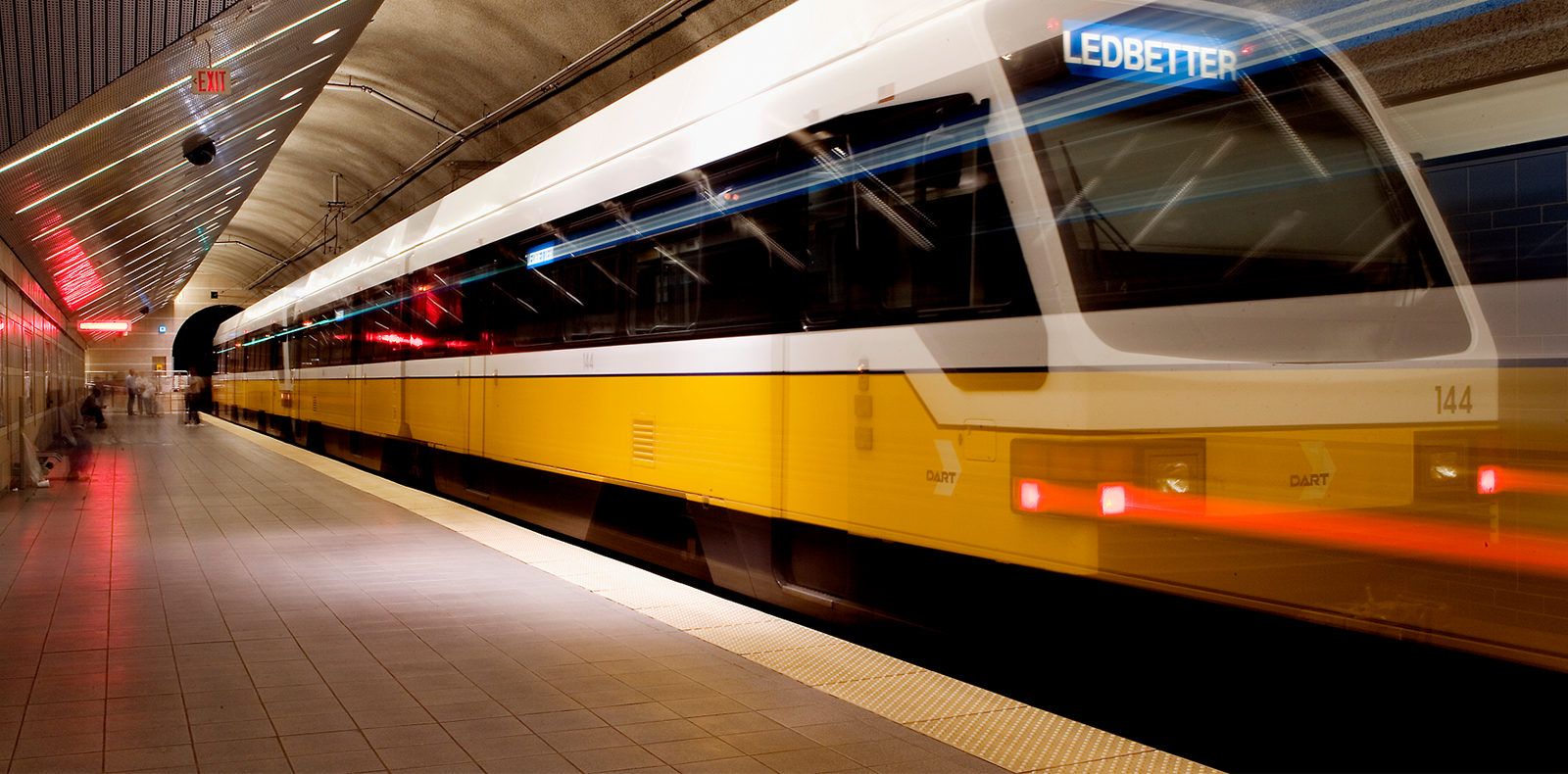
- So, What is The Cotton Belt?
The Cotton Belt is a 26-mile rail line stretching from Plano to Dallas/Fort Worth International Airport, and is part of DART’s Transit System Plan and Twenty-Year Financial Plan. Originally owned by the St. Louis Southwestern Railway, the right-of-way was purchased by DART in 1990 to build a future regional rail line identified in the original 1983 plan that was the basis for DART. The time has come to finally make this project a reality. DART is working to complete the Cotton Belt by 2022 by taking advantage of a unique financing opportunity available to the agency.
So, how is regional rail different from light rail? Regional rail typically is designed for the commuter; it has fewer stops over longer distances and connects to major activity centers and transfer hubs. But this rail line won’t be your grandmother’s lumbering locomotive. Outfitted with a sleek exterior and interior, the Cotton Belt line will use new trains that include the latest in passenger comfort and amenities such as wi-fi, and advanced safety and technology features that meet the strictest air quality guidelines.
- What Benefits Will the Cotton Belt Bring to North Texas?
The Cotton Belt will connect seven cities and DFW Airport, opening up new options for mobility and access in this part of North Texas and bringing:
- Economic Development Opportunities: The Cotton Belt will enhance access to new and growing developments such as CityLine and Addison Circle, while expanding opportunities in new areas, bringing new restaurants, shopping, services, employment, entertainment, and cultural opportunities to residents in the North Texas region.
- Capacity and Connectivity Benefits: The Cotton Belt will be integrated into DART’s larger transit system. This new regional rail line will connect with DART’s Orange Line and Fort Worth’s TEX Rail line at DFW Airport, and with the Green Line and Red Line. We all know North Texas’s population is growing. Providing even more multi-modal mobility opportunities for the region’s residents will provide options to congested roadways and continue to support quality of life for individual communities and the region as a whole.
- Workforce Development: Increased mobility to and from the University of Texas at Dallas will help connect more North Texas residents to education opportunities and give students greater access to work and internship opportunities. In turn, we will continue building the workforce needed to support the array of industries that already call our area home or would like to put down roots here.
- Who Supports the Cotton Belt?
Many North Texans have voiced their support for the Cotton Belt and their excitement about the opportunities it will bring to the entire region.
In Plano, city manager Bruce Glasscock has said that this rail line will solve many of our area’s growth and transportation capacity issues: “We can’t put enough concrete down and we can’t build enough roads to handle all that traffic.”
Richardson’s Chamber of Commerce President and CEO Bill Sproull has stated, “The Chamber has long advocated for the development of the Cotton Belt Line that connects Richardson and Plano...This is huge for our businesses and huge for our communities because it gives us this other transportation linkage we have long sought.”
A collaborative master plan between the University of Texas at Dallas, the city of Richardson and DART proposes a Cotton Belt Rail Line station, as well as additional housing, retail, office and park space in future phases. The recently opened Northside is the first phase of this transit-oriented development project.
Dr. Calvin Jamison, UT Dallas vice president of Administration, said “This is the natural next step to making our University more connected to the local community and creating a destination that will further enhance the overall campus experience.”
- Where will DART find the funds for the Cotton Belt?
DART will be building the Cotton Belt in phases. This mostly single-track commuter rail will take advantage of a new federal loan program offered by the
Federal Railroad Administration called the Railroad Rehabilitation and Improvement Financing (RRIF).
- What is the current status of the Cotton Belt?
DART held community meetings about the Cotton Belt in August 2016, updating the community on the funding opportunity and the new schedule outlined in the DART Financial Plan. In 2017, DART will re-initiate public meetings and outreach, gaining valuable feedback to advance the project design and continue environmental impact research. Stay tuned to learn more about the Cotton Belt and other DART projects!







 Translate
Translate
Leave a comment